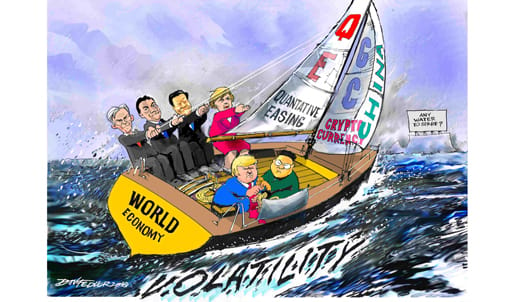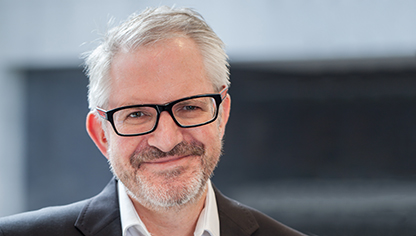
We’ve asked some of Investec Wealth & Investment’s brightest and best to answer a series of questions about global markets in 2018.
Please note that the idea is not to replicate our “house view”. You can get a really good insight into that by reading our most recent Global Investment View. Rather, we try to draw on some of the thinking that our investment managers and strategists bring into our various processes.
These are often very diverse – but we believe this is a strength rather than a weakness when it comes to building portfolios. All of these views will have been aired and debated in different contexts – from our Global Investment Strategy Group meetings to our numerous asset allocation discussions, as well as other portfolio or economy discussions. We trust that you’ll find some thought-provoking insights from the team.
Our panel includes: Annelise Peers (chief investment officer, Investec Wealth & Investment, Switzerland), John Wyn-Evans (head of investment strategy, Investec Wealth & Investment UK), Barry Shamley (portfolio manager in charge of the Opportunities portfolio), Professor Brian Kantor (chief economist and strategist), Bradley Seaward (portfolio manager) and Paul McKeaveney (portfolio manager and head of the SA asset allocation committee).
Q&A Jan/Feb 2018
The world appears to be in a better space at the start of 2018 than it was a year ago – all of the major economies appear to be in a growth stage. What could possibly go wrong?
BK: It is in a much better space, one of synchronised growth (led by the US) that shows at last that the global economy has recovered from the financial crisis. Growth tends to reinforce growth, consumption spending leads capital formation and higher revenues for government encourage more government spending. The global business cycle is not dead and is about to demonstrate a period of accelerating growth – off what is still a very low base. The current 3.9% growth (the IMF forecast for 2018) could become 5% growth.
The momentum will slow down when capacity constraints at some point restrain momentum (wages of labour and cost of capital) and interest rates rise to put pressure on margins and prices. Central banks may choose to raise interest rates to slow down spending and credit creation. Markets will always worry about these policy reactions and their influence.
SA is lagging behind the global recovery, for SA-specific circumstances that have changed dramatically. The local economy will benefit from less anxiety about our leadership and its intentions and from less inflation – given the strong rand and weak dollar – hence lower interest rates will follow to reinforce the recovery in household spending. The recovery in metal and mineral prices linked to the global recovery is supportive of the mining sector. The metal cycle may have a lot further upside as may emerging market equity and bond markets, to which SA is now reconnected.
JWE: The two main (vaguely forecastable) threats are central banks that overtighten and politicians to put nationalistic tendencies ahead of global cooperation. Both would constrain growth. The former would raise the cost of capital; the latter would raise the equity risk premium again. Exogenous shocks (among which I would count North Korean nukes) are much harder to predict.
PMcK: The problem is that we are closer to the end of the cycle than the beginning, so I think investors are likely to be quite nervous in terms of timing their exit. Volatility has been so low for so long (we’ve yet to see if the recent jump is a sign of things to come), it feels as though there is an element of complacency out there.
BSE: The main risk would be aggressive interest rate hikes in the US, leading to an accelerated, inverted yield curve and tipping the US into an early recession. This would have a major impact on local and global markets.
AP: An inflation surprise that makes the market feel that the Fed is behind the curve and leads to a sudden spike in the US dollar. Financial conditions could then suddenly become restrictive. Another is “stagflation”: growth could slow down, while inflation increases – the opposite of 2017 and not good for markets…stocks are expensive and we could have a sizeable correction.
BSH: Global geopolitical risk, a spike in inflation and deceleration in Chinese growth are the issues that concern me.
Alternatively, things could turn out even better than we expect – what are the elements that could ensure an upside surprise?
PMcK: In South Africa, we need to take advantage of both the global backdrop (i.e. strong, synchronised growth and emerging market inflows) and capitalise on the change in leadership in the ANC. The risk is that we don’t do enough by the time the cycle turns and we lose the opportunity.
AP: The upside surprises could include: China growing faster than forecast, which would support growth in the rest of the world; and the US dollar remaining weak or weakening further – this could keep financial conditions easy.
BSE: If President Jacob Zuma steps down, it could lead to an accelerated strong rand, benign inflation, aggressive interest rate cuts, and a booming SA consumer environment. Globally it would be new Fed Governor Jerome Powell continuing on his predecessor’s dovish path and keeping rates relatively low, guided by current market conditions and macro influences.
JWE: The key elements would be non-inflationary growth and a recovery in productivity. Basically, anything to stay the hand of central banks.
BK: The upside surprise would be the upswing phase of the cycle lasting longer – maybe a lot longer than expected. And that inflation and interest rates rise slowly rather than rapidly. Low inflation is still being priced into global bond markets. Not too hot, not too cold is a possibility. The upside for SA is that economic policy reflects normal, not pernicious intentions. And that South Africans can play to their strengths with the aid of not only better government but less government intervention.
BSH: Moderate inflation coupled with continued synchronised global growth.
Will volatility return in a sustained way in 2018? If it does, is this necessarily a bad thing? Put another way, could we see decent gains AND rising volatility?
AP: Volatility is already rising and that generally leads to a correction. A 2018 correction should hopefully be a mild one, but a recession is not on the cards yet.
JWE: It’s about time! Volatility is not to be feared. It provides opportunities for active managers and asset allocators. See VIX 1995-1999 for an example of rising volatility and a bull market in equities (although this time we won’t get the tailwind of a benign shift lower in bond yields).
BSE: Volatility is mean reverting and is bound to return. Equity markets and volatility are inversely correlated, which could lead to a large temporary correction in equity markets abroad. We may already have started to see this in the market moves after the release of January employment data in the US.
PMcK: I would expect a correction at some point (and an associated rise in volatility – as we have already seen in February) but that may well be another entry point for a number of investors who have not participated in large parts of this bull market. So you may see a spike in volatility but then a continued rise in the market over the year.
BK: Some pick up in volatility (day-to-day moves in equity markets) could occur (and seems already to have begun) after a long period of very limited share market drawdowns. Low volatility means less risk and higher prices. But it is a question of degree. Rising earnings/dividends/ buybacks and merger activity can all add to valuations, especially if interest rate fears are contained. Volatility in bond and currency markets has picked up and the US dollar has weakened. A welcome development for emerging market currencies and policy action.
BSH: Volatility could increase while investors rotate from growth to value companies as economic growth provides decent revenue growth to more cyclical companies.
Inflation is the dog that didn’t bark in, well, pretty much every year since the global financial crisis. Could this be the year it starts to rear its ugly head? What are the implications?
BK: Faster growth sustained for longer will put pressure on prices. The question is: how much? And how much will disruptive competition, enhanced by IT, hold back prices? And still sustain operating margins? Ideally we will see more competition for capital (higher real rates) without more expected inflation adding further to long-term interest rates. The dogs may or may not bark, but we will be listening out for their reactions to the potential intruder.
BSH: I expect it [inflation] to rise somewhat. This will impact interest rates which in turn will impact the valuation of defensive yield plays, growth stocks and property companies. The rise in inflation should be in response to growth, which in turn will benefit cyclical/value stocks.
BSE: Inflation continues to remain benign in the developed world – if inflation does pick up considerably, the US will raise rates aggressively and could tip it into a recession prematurely.
AP: I believe most market watchers have become too relaxed about inflation and 2018 will see cyclical inflation picking up. The bond market is already warning us of this possibility…
JWE: Maybe. We are agnostic. Both camps (inflationists and deflationists) have good arguments. I suspect the Phillips Curve is not completely dead, but demographic and technological forces are powerfully disinflationary. The markets are not set up for an upside inflation surprise, so that is a concern.
PMcK: To a large extent, seeing an increase in inflation would be a good thing given that central bankers have been waging a war against deflation (just ask the Japanese!). Inflation within a certain range can be an environment in which risk assets perform well, as long as it doesn’t overshoot. This would mean a more aggressive interest rate tightening cycle than the market expects.
Despite the prospect of higher rates in the US, the dollar has been remarkably soft this year. Meanwhile, the euro and emerging market currencies have been decidedly strong. How do you see global currency forces panning out in 2018?
JWE: Only a mug forecasts currencies! Things seem well set for the euro, given the relative economic momentum and trend of investment flows. The pound remains vulnerable to Brexit/Labour Party risks.
AP: The US dollar has been weak because growth in Europe, in particular, has outperformed the US in the last six months of 2017. However the euro is very overbought at the moment and a period of cyclical US dollar strength could emerge – which will not be good for risk assets.
BK: The weaker dollar reflects the sense of relatively better returns expected elsewhere, even as equity returns in the US continue to be above normal. Emerging market equities have been on an even bigger tear, off a very weak base and years of distinct underperformance. The US will not address a weaker dollar – Europe will worry about its competitiveness and emerging markets should welcome the weaker dollar. The pace of US growth is likely to accelerate as business confidence builds and capital formation gains further momentum. I would not expect dollar weakness to persist given faster US growth (perhaps surprisingly fast growth) as business responds to the encouragement it is getting and has welcomed.
BSE: I see a likely stronger dollar in a rising interest rate environment. Stronger emerging market currencies would result as global growth continues to surprise on the upside.
BSH: Continued strength for Europe and emerging markets, provided there are no meaningful risk-off events.
Are we moving into the final stages of the phenomenon known as quantitative easing (QE)? Is there room for a policy mistake?
AP: QE tapering is already happening and QE will possibly come to an end. However, balance sheets will not necessarily be wound down and the next economic slowdown could see QE back on the table again. QE tapering is a very slow process.
JWE: Yes (for now, at least). The European Central Bank (ECB) will stop this year (but not reverse), which basically leaves us with a case of Fed unwinding on one side vs Bank of Japan “QE forever” on the other. Projections suggest aggregate balance sheet shrinkage begins in early 2019. That’s not necessarily a policy mistake. It all depends on the economic trends.
BK: QE has done its work. How it is phased out will write a new chapter in monetary history. There is always room for monetary policy error given the abundance of excess cash reserves in the global banking systems. The markets will be making a continuous assessment of the policy reactions. And vice versa, the policymakers will be making assessments of how the markets are reacting and what the markets expect. Calming the markets will be a key objective of policymakers. Transparency of policy and effective communication of policy intentions will be their mantra. No surprise in monetary policy remains the conventional wisdom.
BSH: I believe growth has gained sufficient traction to overcome moderately higher rates. The issue will more likely be psychological and the path of balance sheet contraction needs to be well guided by central banks to ensure no unexpected surprises and reactions.
Populism, inequality, barriers to trade – these have been the themes of the last couple of years. How do you see these developing in 2018?
BK: Populism is but another name for politics that tries to be popular. It will have a more nationalistic bias but global trade will not be disrupted, nor will the global reach of companies with true intellectual property be inhibited. The issue that will confront US and China is the protection of this property. The US is the leader in innovation.
BSH: Broad-based economic growth should help eradicate some of these issues. While QE did in my opinion help Wall Street more than Main Street, it was necessary particularly given that the central banks had run out of tools with rates at or close to zero. Now that the global economy is gaining traction, Main Street will be participating in a greater sense than it had in the past.
BSE: Financial inequality will continue to widen in the tech revolution. Immigration and security are ongoing policies that will be deeper enforced in the coming year, particularly in the US.
AP: Populism is not a big theme for 2018 as the economies are growing nicely – however we will see it back on the table when we have the next recession.
JWE: It’s still there, but less forceful owing to the electoral cycle.
PMcK: Italian elections are something I don’t think the market is paying enough attention to.
What are the markets to watch in 2018, both regionally and in terms of emerging/developed markets? Is there still some way to go on the commodity front?
BSE: South Africa has the potential to be the top performing market globally, driven by both currency appreciation and cheap equity valuations on domestic stocks – a lot is riding on the local political front. In the developed world, Japan seems to be doing the right things and if it can sustainably keep the yen weaker, exports will continue to grow the economy and stock markets could perform well too.
AP: 10-year bond yields and a strong US dollar will be a big negative for markets – however as said before, this should be a cyclical phenomenon for the first half of the year. If the US dollar weakens again that should support risk assets for the second half of 2018.
JWE: Happy to stick with our preferred Europe and emerging markets call. We don’t want to be long government debt and prefer index-linked to conventionals.
BSH: South Africa appears to be one of the best placed emerging markets in 2018. Within developed markets, I have a slight preference for Europe and Japan over the US.
A word on China?
JWE: Too many people want to see it fail because they are either envious or scared. The government has too many levers still to pull to let the edifice crumble, although there might be the odd hiccup (like HNA – the conglomerate targeted by the Chinese government in a credit clampdown last year). Still lots to offer over the long-term.
AP: Wait and see how the reforms by XI play out. It’s more of a long-term buy – in the short term look for better entry levels.
BK: The global economy has a very big chunk of China in it so China watching will remain very much on the agenda. China would benefit even more from better-directed savings and capital formation. There is a lot of room for improvement and normalisation, but no reason to fear any meltdown or disruption.
BSH: Very difficult to comment but based on the official data they have managed their economy and its transformation very well.
BSE: 6%+ plus growth, what more is there to say?
What are the sectors to watch? Look at cyclicals vs defensive, growth vs value, offshore vs local, industrials vs resources, bonds vs equities, tech, or any other themes that are worth mentioning. Feel free to mention specific shares.
BSH: For global growth, go for cyclicals and emerging markets. Within South African sectors, domestic small and mid-cap companies are very attractively priced, particularly on a relative basis against large-cap banks and retailers that have rerated significantly since the Ramaphosa victory.
BSE: While there seems to be a rotation from growth into value, I don’t think we can discount the opportunities being presented in the higher yielding global consumer plays, which have been seen as bond proxies. Everything has a price and the rotation could provide good opportunities to buy quality on the cheap.
AP: Bonds are becoming interesting. With the US 10 year at 2.8%, it offers better value now vs equities on a long-term buy and hold basis. However, it (10-year rate) could move above 3.05% in the short to medium term.
2017 was certainly the year that the hype around cryptocurrencies reached a crescendo. What should we look out for on the crypto front in 2018?
BSE: Cryptocurrencies in their current form look like a bubble, but I believe that the next wave will be utility-based cryptos that use the technology which they were intended for, to provide streamlined services to industry (along with which there are cash flows associated and a fair value can be determined). In their current form, there seem to be fewer and fewer chairs every time the music stops playing.
PMcK: I would expect to see some consolidation in terms of the number of initial coin offerings (ICOs). Up until now, it’s largely been a free-for-all with investors scrambling to get into the next best thing. I think some of the hot air will come out of the market and we will see some very interesting offerings.
AP: We are now starting the ‘disgust’ phase and it will be a while before we hear from cryptocurrencies again…
JWE: More understanding of what they actually are. They are very similar to shares in companies (but with little regulation and due diligence available), not asset classes in their own right.
BSH: Can’t comment, I consider it highly speculative and therefore very risky.
One of the Black Swan events in 2018 could be that the Western Cape runs out of water. What are the implications for the economy? And, more broadly, for the future of cities in water-scarce areas? Looking at it from another angle, could this be an opportunity to develop new technologies?
BSH: I believe sufficient technology exists in terms of desalinisation. For example, PSG has invested in a Western Cape-based business (GrahamTek) that is providing desalinisation solutions globally, including recently signing a R5bn deal in Saudi Arabia. All that is required is a bit more coordination from Western Cape authorities to ensure timeous delivery of their various initiatives. On a national basis, our water infrastructure is crumbling and local companies that manufacture pipes and install pipes such as Dawn and Esor should benefit from the required expenditure.
BSE: No water could lead to an absolute meltdown for the Western Cape economy, from which it could take decades to recover (New Orleans with Hurricane Katrina is an example of a disaster struck city). We all need to be far more water conscious and preserve as much water as we can during the good times because a drought is no fun and the possibility of a “day zero” is terrifying. There is already great water technology in existence, however, the costing remains fairly high. Further investment in this space could improve the technology and reduce the costs materially.
AP: Clean water has been one of the creeping shortages that environmentalists have been warning about and Cape Town illustrates the point. Some people believe World War III will be about clean/fresh water.
PMcK: Absolutely. Necessity is the mother of all invention. The technologies have been available in a lot of cases but the planning and awareness haven’t. I don’t think we will look at water the same way again.
JWE: Please read the section in this year’s Vision 2018 publication – “Water, water, everywhere, nor any drop to drink”!
About the author

Patrick Lawlor
Editor
Patrick writes and edits content for Investec Wealth & Investment, and Corporate and Institutional Banking, including editing the Daily View, Monthly View, and One Magazine - an online publication for Investec's Wealth clients. Patrick was a financial journalist for many years for publications such as Financial Mail, Finweek, and Business Report. He holds a BA and a PDM (Bus.Admin.) both from Wits University.
Receive Focus insights straight to your inbox




